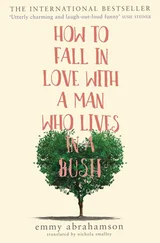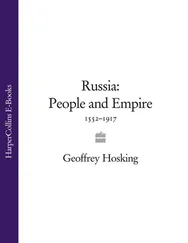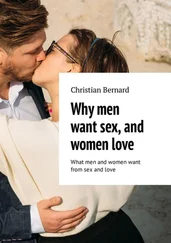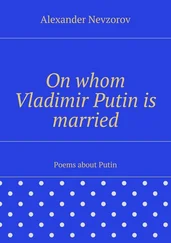The third feature of the Runet was that it went mainstream in the second half of the 2000s, exploding just at the start of the credit crunch, unlike in Western Europe where it had taken place a decade before. This meant that the web’s cultural imprint was defined by the financial crisis. Yet few were optimistic in the late 2000s about the possibility for the Internet to affect change. The title of the publication The Web that Failed summed up expert opinion on its political potential. 38
The Kremlin did not begin to comprehend that they had set themselves an online trap. In 1999 it would have been possible to censor the Internet without major protests – users were only 1 per cent of the population. By 2005 this was already impossible, with users at 15 per cent. By 2010 a majority of Russian households had a personal computer and an estimated 43 per cent were users. 39The Putin videocracy that managed democracy depended on only worked when the crushing majority got their news from state-controlled TV. With more and more of them switching online – it was being hollowed out by millions of bloggers.
The Rise of Migrant Russia
Russia in the 2000s was not just becoming richer – it was becoming less Russian. The boom was sucking in so much cheap labour that Caucasian and Central Asian migrants could now be found literally anywhere, even on a third-class train ride to Siberian Omsk. That was where I met Hamid, the only man on the night-train who wasn’t drinking. He still had a long way to go. Hamid drove a clapped-out Soviet bus in a Russian mining colony beyond the Arctic Circle, where temperatures regularly plunge below –40ˆC. Yet this native of desert Uzbekistan had few regrets about migrating to Russia. ‘In my country there are more men than jobs – in Russia there are more jobs than men,’ he explained.
Hamid was no strange oddity but one of at least sixty Uzbeks in the carriages. He is a staple of today’s Russia, because in the 2000s Russia became a migrant country. This influx was at odds with the conventional Western narrative, where demographic collapse is endlessly cited as driving Russian decline. Whilst true that the native Russian population fell dramatically during the 1990s, there was also a huge, and under-recorded, influx of people like Hamid. Russia is now the second most popular country for migrants in the world after the United States.
Starting in the early 2000s Moscow and other major cities were transformed. Migrants flooded in from the former Soviet republics of Central Asia, the Caucasus and Eastern Europe to do the work that natives turned down. It created a racially distinct underclass out of the old ‘little brother nations’ of the imperium. Today, Tajiks sweep the streets, Azeris wait tables and Uzbeks work on construction sites. They are treated as something between invisible inferiors, children and slaves.
Nothing catches this better than walking home in Moscow in the snow late at night, at the darkest hour when everyone who is still awake is Asian – gangs of shivering Kyrgyz migrants, pausing to share cigarettes, shovelling snow under the orange street lamp glow in order to make room for the morning’s traffic. Many of them live in squalid basements sharing fetid mattresses, wooden barracks outside the city, or huddled in cramped apartments with dozens of men sleeping on the floor. They are everywhere, even beneath the piecrust architecture of the tsarist centre, where Kyrgyz squat whole basements, Uzbeks cram twenty men into leaking attics and Tajiks stuff as many as they can into suffocating dormitories.
Visa-free regimes between Russia and most of its former colonies, plus the corruption of officialdom, means that few people bother immigrating formally. Nobody knows precisely how many migrants there are in Russia, but officials admit there are over 10 million with the true figure (if one accounts for illegals) as high as 15 million and rising fast. 40Between 1992 and 2008, Russia officially lost over 7 million people, despite the immigration of ethnic Russians and others with Russian citizenship from other former Soviet republics. 41But if you add these new migrants to the calculations, it now has more people than it lost. In short, though the ethnic Russian population has fallen, Russia does not have a demographic crisis – but an ethnic crisis.
Ethnically the country was undergoing a seismic shift. Experts estimated that Russia was on its way to becoming 20 per cent Muslim by 2020, with Islam’s demographic share having exploded 40 per cent since 1989. 42The emigration over two decades of millions of Jews, Volga Germans and the Balts was interpreted as ‘de-Europeanization’, whilst the migrant wave swung the racial balance in Russia back towards Turkic groups for the first time since the eighteenth century. Projections by the nation’s leading demographer Anatoly Vishnevsky estimate that if current trends hold, by 2025 as much as 15 per cent of the population will be recent immigrants, rising to 35 per cent by 2050. 43Most of them will be Muslim. More and more apartments for rent qualified their adverts as ‘Slavs Only’. I emailed one once: ‘Does it matter if I am a non-Slavic Jew for renting the one-bedroom apartment with the shared bathroom on the eighth floor?’ The reply – ‘This may be negotiable’ – was revealing. After two centuries of being fixated by Jews, the cosmology of Russian hate was fixating more and more on Muslim migrants.
The Kremlin found itself in a strange bind by the decade’s end. It had been appealing to nationalism, but it had no choice but to admit over 10 million migrants in order to keep the economic boom afloat. Demographers estimate Russia now needs to admit at least 700,000 more in order to sustain growth. 44Nor could it really police its borders with ex-Soviet states. This meant it was forced to present an anti-chauvinist position, in defence of a huge mostly Muslim migrant wave. Putin began trying to discreetly fashion a more multicultural society. He has announced that for those who wanted to tie their future to Russia ‘the door will always be open’. The head of the Federal Migration Service admitted that migrants are key to improving the demographic situation.
But capitalizing on immigration involves more than just letting people in. Life for migrants became increasingly tough; most lived in penury often harassed by skinheads. Across Russia, cases of near slavery have been reported, with Uzbeks, Kyrgyz and Tajiks tricked or otherwise forced into working in agriculture or on construction sites for little or no pay. 45Even in Moscow, dozens of the sullen Central Asians behind the tills in corner shops – who people see every day – have been found to be beaten slaves. 46Unprotected by the (ignored) labour code, Putinism has created a huge racially distinct underclass that risks not only driving down workers’ wages and rights, but also undermining the case for innovation or basic efficiency gains with plentiful cheap labour. Able to import near-slave labour at minimal costs, employers had no need to modernize or protect workers’ rights. This was not appreciated at the time, but due to the weakness of the rule of law, migrants may have been contributing to growth but they were stalling Russia’s modernization – and further devaluing what it meant to be a ‘Russian citizen’.
This problem, like so many other governance failures, was obscured in the boom years. Putin had not realized it but, by allowing the import of millions of Caucasian and Central Asian migrants, he was cracking the Putin consensus. At the beginning of the decade he could be seen as a nationalist hero, fighting for Russia in the Caucasus. Now he was seen as a man who would flood Russia with Muslims for the sake of cheap labour. As the nationalists lost interest in Jews, only to discover Islam as the enemy, Putin lost them.
Читать дальше












